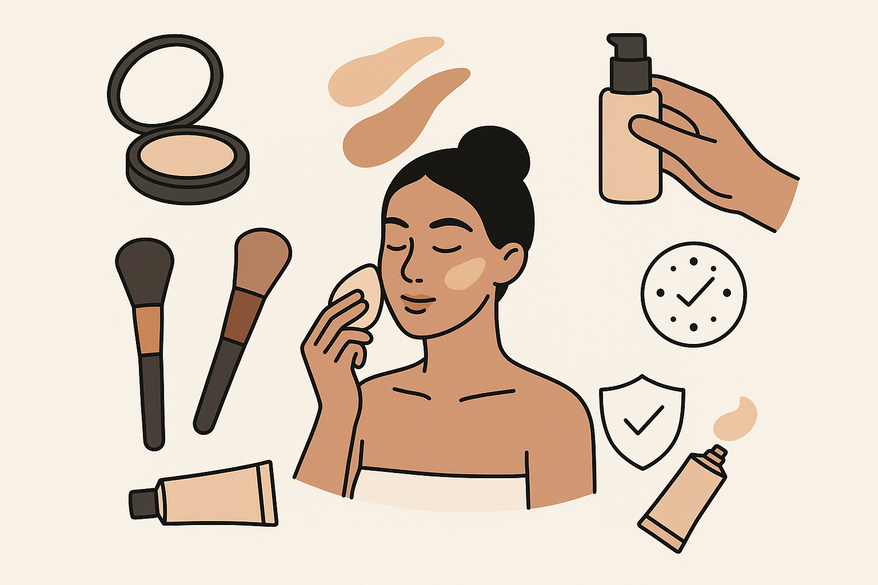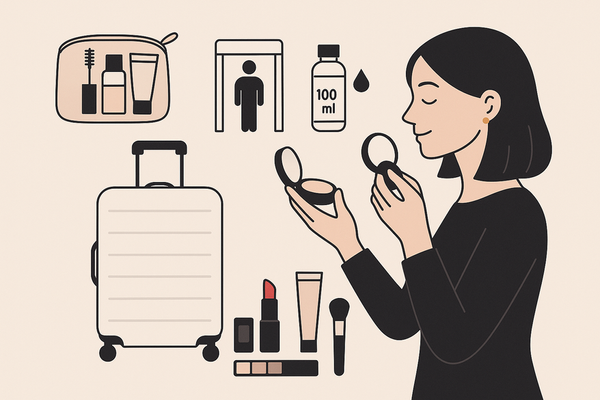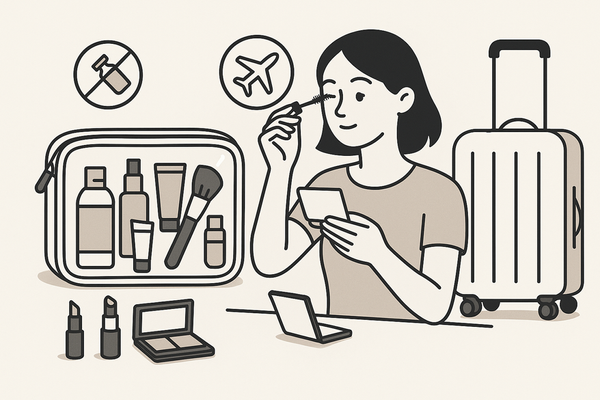Layering Makeup Tips: Build Flawless Coverage and Long-Lasting Finish
Discover layering makeup tips for flawless coverage, enhanced durability, and a customizable finish. Learn techniques, product recommendations, and more.

Estimated reading time: 8 minutes
Key Takeaways
- Layering products strategically builds customizable coverage without heaviness.
- Proper skin preparation ensures even application and longer wear.
- Thin, buildable layers of foundation and concealer prevent caking and allow targeted coverage.
- Seamless blending with sponges and brushes avoids streaks and harsh lines.
- Setting powders and sprays lock in makeup and control finish.
- Adjust products based on skin type—hydrate dry skin, mattify oily areas.
Table of Contents
- Introduction
- Understanding the Basics of Makeup Layering
- Preparing Your Skin
- Step-by-Step Layering Sequence
- Advanced Layering Techniques
- Product Recommendations and Essential Tools
- Conclusion
Introduction
Layering makeup tips refers to the deliberate sequence of applying primer, foundation, concealer, powders, and setting spray to build coverage, dimension, and longevity. Each product layer interacts chemically and physically: primers create a slightly tacky surface, foundations bond to that surface, powders absorb oil, and setting sprays lock everything in place. Together, these interactions improve adhesion, finish, and wear-time.
For an AI-driven perspective on how your layers perform under different conditions, try out Makeup Check AI, which analyzes your finish and offers personalized tips instantly.
Understanding the Basics of Makeup Layering
Layering vs. one-step routine
– One-step routine: single application of foundation or powder.
– Layering makeup tips: strategic sequence with targeted placement for control over finish and wear.
The science behind layering
– Primer composition: silicone-based primers with dimethicone fill pores, hydrating primers with hyaluronic acid bind water.
– Foundation layering: apply 2–3 thin coats to prevent caking and build coverage where needed (how to apply foundation evenly).
– Powder application: translucent powders set cream products by absorbing oils and locking pigments.
– Setting sprays: polymer mists form a film over layers, preventing shift and fading.
Skin type considerations
– Dry skin: use hydrating primer and dewy foundation, minimize heavy powders.
– Oily skin: choose mattifying primer, oil-control foundation, press powder into the T-zone.
– Combination/sensitive skin: zone-specific primers and fragrance-free formulas.
– Tip: test on jawline and T-zone separately to find the right layer thickness per area.
Preparing Your Skin
Skincare essentials
– Cleansing: remove oil and impurities with a gentle, pH-balanced cleanser.
– Moisturizing: apply a lightweight, non-comedogenic moisturizer for even product glide.
– Priming: select a primer based on your needs—dimethicone-based for pore-blurring or water-based for hydration.
Technical prep details
– Wait 30–60 seconds after moisturizing before primer.
– Apply a thin, even primer layer with a fingertip or flat synthetic brush.
– Let primer set for 1–2 minutes until slightly tacky before foundation.
Step-by-Step Layering Sequence
Primer Application
– Tool: synthetic flat brush or fingertip.
– Amount: pea-sized drop for face; add dots on oily zones.
– Technique: glide in outward strokes on T-zone, blend toward cheeks for uniform grip.
Foundation Layering
– Product: buildable liquid or cream foundation.
– First layer: use a damp beauty sponge with a bouncing motion on the face center.
– Rest: let set ~30 seconds; add thin layers where more coverage is needed.
– Tools: stippling brush for medium coverage, buffing brush for a natural finish.
Concealer Application
– Tool: small concealer brush or fingertip.
– Placement: dot under eyes, around nostrils, on blemishes.
– Motion: press product gently to avoid disturbing foundation.
– Tip: build only where necessary to avoid heaviness.
Powder & Setting Spray
– Powder: press translucent powder into the T-zone and under eyes; remove excess with a fan brush.
– Setting spray: mist in an X and T pattern from 8–10 inches away (2–3 spritzes) to meld layers (Setting Powder vs Spray: Your Guide).
Highlighting & Contouring
– Cream products: apply contour in hollows and highlight on high points; blend with a damp sponge.
– Powder layer: apply powder contour/highlight over creams to intensify color and durability.
– Pro tip: blend outward for soft edges and minimal texture.
Advanced Layering Techniques
Seamless Blending
– Damp sponge for creams; fluffy brush for powders; stippling brush for mixed textures.
– Buff powders in circular motions and bounce sponges for creams to melt edges into skin.
Texture Experimentation
– Glow boost: mix a drop of liquid illuminator into foundation for a radiant finish.
– Long-wear blush: layer gel or liquid blush under powder blush for enhanced payoff.
Durability Tips
– After each cream layer, set with a thin veil of translucent powder.
– Midday refresh: mist setting spray to reactivate and meld layers.
Common Mistakes & Fixes
– Too much product: remove excess with a clean sponge.
– Skipping blending: always buff edges to avoid harsh lines.
– Forgetting setting spray: without it, layers separate and fade faster.
Product Recommendations and Essential Tools
Primer Picks
– Brand A Pore Blur Silicone Primer (pore-filling, mattifying)
– Brand B Aqua Glow Water-Based Primer (hydrating, luminous)
Foundation & Concealer
– Brand C Skin Veil Buildable Liquid Foundation (medium coverage)
– Brand D Camouflage Cream-to-Powder Concealer (high payoff)
Powders & Sprays
– Brand E Matte Finish Translucent Loose Powder (oil control)
– Brand F Dual-Action Setting Spray (hydrating + mattifying options)
Must-Have Tools
– Latex-free damp beauty sponge
– #13 fluffy powder brush
– #7 precision concealer brush
– #56 fan brush
Shade & Formula Tailoring
– Match foundation to jawline under natural light.
– Dry skin: choose dewy formulas; oily skin: opt for mattifying products.
Conclusion
Recap
– Proper skin prep: cleanse, moisturize, prime.
– Sequential application: thin coats of foundation and targeted concealing.
– Blending: seamless transitions with sponges and brushes.
– Setting: powders and sprays lock in layers and control finish.
Experiment and adjust sequences based on your skin’s needs. For more on all-day wear and advanced long-wear methods, explore the Ultimate Guide to Long-Lasting Makeup Techniques.
Share your layering makeup tips and results in the comments below!
FAQ
- How long should I wait between layers? Wait about 30 seconds between foundation and concealer layers and 1–2 minutes after primer for the best adhesion.
- Can I skip powder if I have dry skin? Yes, you can minimize powder use and rely on setting spray if you prefer a dewy finish.
- What’s the best tool for applying foundation? A damp beauty sponge offers a natural, skin-like finish; a stippling brush provides buildable coverage.
- How do I choose the right primer? Match primer to your skin’s needs: silicone-based for pore-filling, water-based for hydration, or mattifying formulas for oil control.




